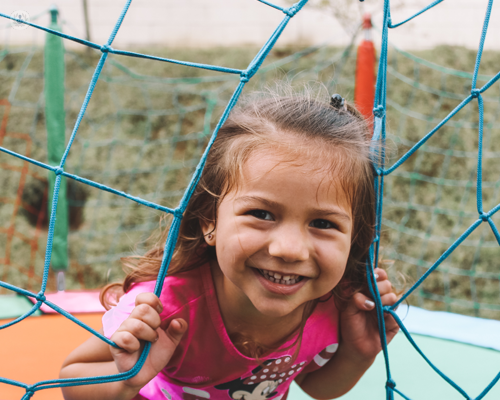All about osteogenesis imperfecta in children
Escrito por:Osteogenesis imperfecta (OI), or brittle bone disease, is a genetic disorder in children that causes fragile bones, making them susceptible to fractures with minimal trauma.

What is osteogenesis imperfecta in children?
It results from mutations in the genes responsible for producing collagen, a vital protein that helps bones remain strong and flexible. Although the severity of OI can range from mild to life-threatening, it is a lifelong condition that requires ongoing management.
What are the types of osteogenesis imperfecta in children?
There are several types of osteogenesis imperfecta that affect children. The types vary in severity and the frequency of fractures. The most common types are:
- Type I: The mildest form, where children may experience fractures mainly during childhood, but their bone deformities are minimal, and growth is often unaffected.
- Type II: The most severe form, often resulting in death shortly after birth due to severe bone deformities and underdeveloped lungs.
- Type III: A severe form that results in significant bone deformities. Fractures may occur before birth or shortly after. Children with this type typically have shortened stature and may require mobility aids.
- Type IV: A moderate form where children have frequent fractures, but less severe bone deformities compared to Type III. Growth may be moderately affected.
What are the signs and symptoms in children?
Children with osteogenesis imperfecta may present a variety of symptoms, including:
- Frequent fractures from mild or no trauma
- Bone deformities or bowing of the long bones
- Short stature, especially in more severe forms
- Blue or grey tint to the sclera (the white part of the eyes)
- Loose joints or hypermobility
- Delayed motor development due to frequent fractures
- Weak teeth prone to fractures (dentinogenesis imperfecta)
- Hearing loss, which may develop during adolescence or early adulthood
The severity of symptoms varies based on the type of OI a child has.
How is osteogenesis imperfecta diagnosed in children?
Osteogenesis imperfecta in children is diagnosed through a combination of clinical evaluation and diagnostic tests. Doctors will assess the frequency of fractures and examine the child for physical signs like blue sclera or bone deformities. Other diagnostic tools include:
- X-rays: To identify fractures and abnormal bone structure.
- Genetic testing: To confirm the presence of mutations in collagen-related genes.
- Bone density tests: To assess bone strength and detect osteoporosis.
In some cases, prenatal screening may identify osteogenesis imperfecta before birth if a family history of the disorder exists.
How is osteogenesis imperfecta treated in children?
There is no cure for osteogenesis imperfecta, but treatment is focused on managing symptoms, preventing fractures, and improving quality of life. Some common treatment options include:
- Bisphosphonates: These drugs help increase bone density and reduce fracture risk.
- Physical therapy: Strengthens muscles, improves mobility, and helps prevent fractures through controlled activity.
- Surgical interventions: Some children may require surgery to correct bone deformities or insert rods into bones for additional support.
- Assistive devices: Mobility aids like wheelchairs, crutches, or braces may be used for children with severe OI to enhance movement and reduce injury risk.
How can parents support a child with osteogenesis imperfecta?
Parents play a crucial role in supporting children with OI. They can ensure their child gets regular medical care, encourage safe physical activities that strengthen muscles, and make adjustments to the home environment to reduce fall risks.
Open communication with healthcare professionals, including orthopaedic specialists and physiotherapists, is essential for managing the condition effectively. Encouraging social interaction and emotional support helps children with OI thrive and maintain a positive outlook on life.


